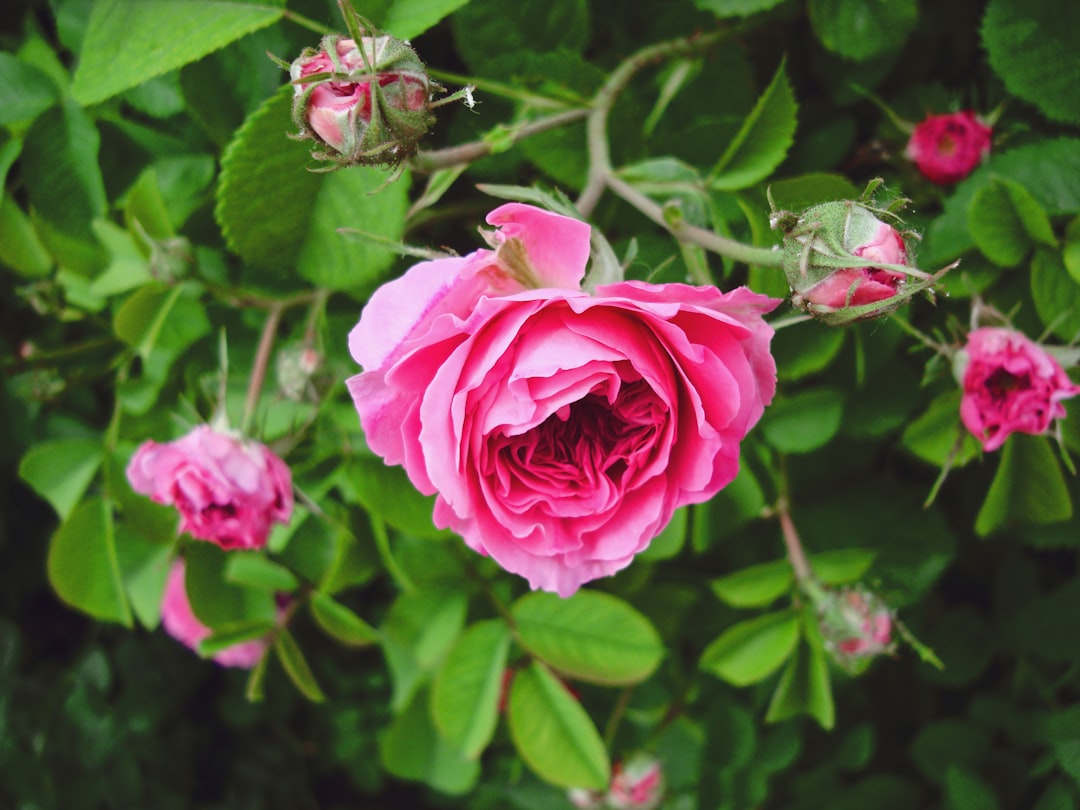Summer Rose Bush Pruning: Tips for a Beautiful Garden

Pruning summer rose bushes is an essential task for any gardener who wants to promote healthy growth and increase flower production. By removing dead or diseased wood, shaping the bushes, and maintaining a balanced shape, you can ensure that your roses thrive throughout the season. In this article, we will explore the importance of pruning summer rose bushes, when and how to prune them, the tools you’ll need, and tips for ongoing maintenance.
Key Takeaways
- Pruning summer rose bushes is important for their health and growth.
- The best time to prune summer rose bushes is in late winter or early spring.
- You’ll need pruning shears, loppers, and gloves to prune your summer rose bushes.
- Dead or diseased wood should be identified and removed to prevent the spread of disease.
- Shaping your summer rose bushes can help them grow in a more attractive and manageable way.
Understanding the Importance of Pruning Summer Rose Bushes
Pruning summer rose bushes offers a multitude of benefits. Firstly, it promotes healthy growth by removing dead or diseased wood, allowing the plant to focus its energy on producing new shoots and flowers. Pruning also stimulates the production of lateral buds, which leads to more blooms. Additionally, by shaping the rose bushes, you can create a more aesthetically pleasing garden and prevent overcrowding.
On the other hand, neglecting to prune your summer rose bushes can have negative consequences. Dead or diseased wood can attract pests and diseases, which can quickly spread throughout the plant and even to neighboring plants. Overgrown bushes can also become tangled and difficult to manage, making it harder for sunlight and air to reach the inner parts of the plant. This can lead to poor growth and decreased flower production.
When to Prune Your Summer Rose Bushes
The best time to prune your summer rose bushes depends on your climate and the type of rose you have. In general, it is recommended to prune roses in late winter or early spring before new growth begins. However, if you live in a colder climate where frost is common in early spring, it is best to wait until after the last frost before pruning.
Signs that it’s time to prune your summer rose bushes include dead or diseased wood, weak or spindly growth, and overcrowding. Dead wood will be dry and brittle, and diseased wood may have discoloration or lesions. It is important to remove these branches to prevent the spread of disease and to promote healthy growth.
Tools You’ll Need for Pruning Your Summer Rose Bushes
| Tool | Description |
|---|---|
| Pruning Shears | A small, handheld tool used for cutting small branches and stems. |
| Loppers | A larger, two-handed tool used for cutting thicker branches. |
| Pruning Saw | A saw with a curved blade used for cutting larger branches. |
| Gloves | Protective gloves to prevent cuts and scratches while pruning. |
| Eye Protection | Protective eyewear to prevent debris from getting into your eyes while pruning. |
| Cleaner/Disinfectant | A solution used to clean and disinfect your tools between uses to prevent the spread of disease. |
To properly prune your summer rose bushes, you will need a few essential tools. These include pruning shears, gloves, and a pruning saw for thicker branches. Pruning shears are used for cutting smaller branches, while a pruning saw is necessary for larger branches. Gloves are important to protect your hands from thorns and potential infections.
When choosing pruning shears, look for a pair with sharp blades that can easily cut through branches. It is also helpful to have shears with a bypass cutting action, as this provides a cleaner cut and reduces the risk of damaging the plant. Additionally, consider the size and strength of your hands when selecting shears, as you want a pair that feels comfortable and easy to use.
How to Identify and Remove Dead or Diseased Wood
Identifying and removing dead or diseased wood is an important part of pruning summer rose bushes. To do this, start by inspecting the plant for any branches that are dry, brittle, or discolored. These are signs of dead wood. Use your pruning shears or saw to remove these branches at their base, making sure to cut just above a bud or leaf node.
When removing diseased wood, it is crucial to properly dispose of it to prevent further spread of disease. Burn the branches or place them in a sealed bag before disposing of them in the trash. Do not compost diseased wood, as this can lead to the spread of disease throughout your garden.
Tips for Shaping Your Summer Rose Bushes

Shaping your summer rose bushes is an important step in pruning. This helps maintain a balanced shape and promotes optimal growth. When shaping your rose bushes, make cuts at a 45-degree angle just above a bud or leaf node. This encourages new growth and prevents water from pooling on the cut surface.
It is also important to leave a few buds on each stem when pruning. This ensures that the plant has enough energy to produce new shoots and flowers. Avoid cutting all the way back to the main stem, as this can weaken the plant and reduce flower production.
Should You Cut Back Your Summer Rose Bushes?
Whether or not to cut back your summer rose bushes depends on their age and size. Younger plants benefit from more severe pruning to encourage healthy growth and shape development. Older, established plants may only require light pruning to remove dead or diseased wood and maintain their shape.
When determining how much to cut back, consider the overall health of the plant and its growth habits. It is generally recommended to remove about one-third of the plant’s height during pruning. However, if your rose bush is weak or spindly, you may need to cut back more aggressively to promote new growth.
How to Prune Climbing Roses for Optimal Growth
Pruning climbing roses requires a slightly different approach than pruning bush roses. These roses often require training to grow along a trellis or fence, and regular pruning is necessary to maintain healthy growth.
To prune climbing roses, start by removing any dead or diseased wood as described earlier. Next, identify the main stems that will form the framework of the plant and tie them to the support structure. Remove any side shoots that are growing inwards towards the center of the plant, as these can create congestion and reduce air circulation.
The Benefits of Pruning Your Summer Rose Bushes Regularly
Regular pruning offers a multitude of benefits for your summer rose bushes. By removing dead or diseased wood, you can prevent the spread of disease and promote healthy growth. Pruning also stimulates the production of lateral buds, leading to increased flower production. Additionally, shaping your rose bushes helps maintain a balanced shape and prevents overcrowding.
Incorporating pruning into your regular gardening routine is essential for maintaining the health and beauty of your rose bushes. By pruning regularly, you can prevent the need for more severe pruning in the future and ensure that your roses thrive throughout the season.
How to Maintain Your Pruned Summer Rose Bushes Throughout the Season
After pruning your summer rose bushes, it is important to continue with ongoing maintenance to ensure their health and beauty throughout the season. This includes regular watering, fertilizing, and monitoring for signs of disease or pest infestations.
Water your rose bushes deeply and regularly, making sure to soak the soil around the roots. Avoid overhead watering, as this can promote the spread of disease. Fertilize your roses with a balanced rose fertilizer according to the package instructions. This will provide them with the nutrients they need for healthy growth and abundant blooms.
Monitor your pruned rose bushes for any signs of disease or pest infestations. Look for discoloration, lesions, or unusual growth patterns. If you notice any issues, take immediate action to prevent further damage. This may include applying organic pest control methods or consulting a professional if necessary.
Common Mistakes to Avoid When Pruning Your Summer Rose Bushes
When pruning your summer rose bushes, it is important to avoid common mistakes that can hinder their growth and health. One common mistake is cutting too much or too little. Cutting too much can weaken the plant and reduce flower production, while cutting too little can lead to overcrowding and poor air circulation.
Another mistake is not properly disposing of diseased wood. If you compost diseased wood, you risk spreading disease throughout your garden. It is important to burn or bag and dispose of diseased wood in the trash.
Lastly, it is important to use sharp and clean tools when pruning. Dull or dirty tools can damage the plant and increase the risk of disease. Clean your tools with a disinfectant before and after each use, and sharpen them regularly to ensure clean cuts.
Pruning summer rose bushes is a vital task for any gardener who wants to promote healthy growth and increase flower production. By understanding the importance of pruning, knowing when and how to prune, and using the right tools, you can ensure that your roses thrive throughout the season. Regular pruning, ongoing maintenance, and avoiding common mistakes will help you achieve optimal results and enjoy a beautiful garden filled with vibrant roses.
If you’re looking for expert advice on pruning your rose bushes in the summer, look no further than this informative article from Lawn World. With their extensive knowledge and experience in lawn care, they provide valuable insights on the best practices for maintaining healthy and vibrant rose bushes during the warmer months. Discover their expert tips and techniques by clicking here.
FAQs
What is pruning?
Pruning is the process of cutting back or removing parts of a plant, such as branches or stems, to promote growth, improve health, and enhance the appearance of the plant.
Why should I prune my rose bushes in summer?
Pruning rose bushes in summer can help to promote new growth, remove dead or diseased wood, and shape the plant for better aesthetics. It can also help to prevent the plant from becoming too large and unwieldy.
When is the best time to prune rose bushes in summer?
The best time to prune rose bushes in summer is after the first flush of blooms has faded, usually in late June or early July. This allows the plant to recover and produce new growth before the next round of blooms.
What tools do I need to prune my rose bushes?
To prune your rose bushes, you will need a pair of sharp pruning shears, a pair of loppers for thicker branches, and a pair of gloves to protect your hands from thorns.
How do I prune my rose bushes?
To prune your rose bushes, start by removing any dead or diseased wood, cutting back to healthy wood. Then, remove any crossing or rubbing branches, as well as any branches that are growing inward. Finally, shape the plant by cutting back any long or leggy branches to promote bushier growth.
What should I do after pruning my rose bushes?
After pruning your rose bushes, be sure to clean up any debris and dispose of it properly. You may also want to fertilize the plant to promote new growth. Water the plant well and monitor it for any signs of stress or disease.



